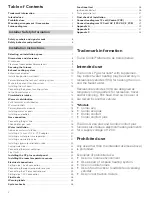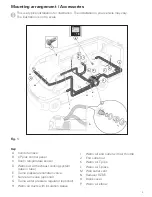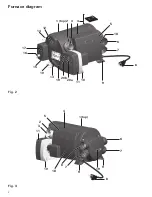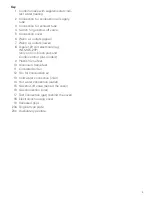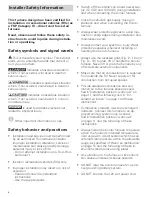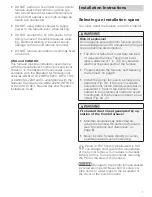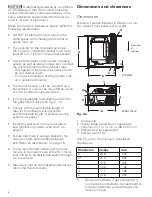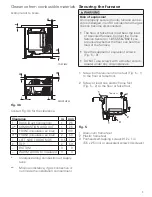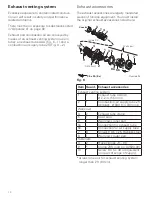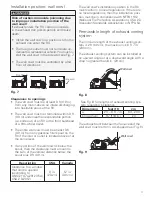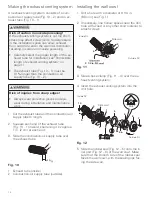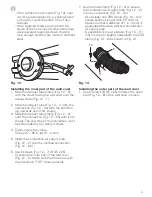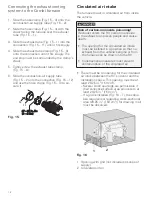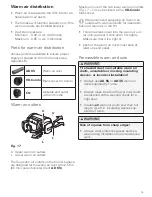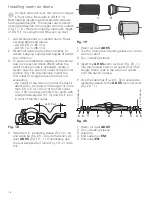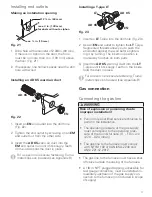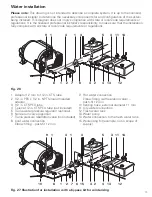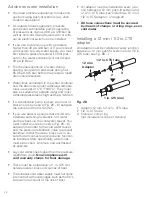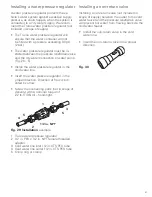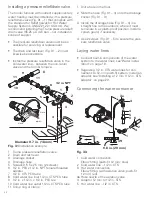
7
Installation Instructions
Selecting an installation space
You must install the furnace in the RV’s interior.
Risk of explosion!
An improperly secured Combi furnace can be-
come dislodged in an RV accident and the gas
line can become disconnected.
• The floor or false floor must bear the load
of a secured furnace. There must be at
least a distance of 1 in. (2.5 cm) between
electrical lines and parts of the furnace.
• Properly secure the furnace; see”Securing
the furnace” on page 9.
• Install the Combi furnace in a sturdy com-
partment (Fig. 16). If there is no suitable
compartment, install a sturdy wood-slat or
equivalent in front of the Combi furnace
vertical to the direction of motion to avoid
movements of the furnace in case of an ac-
cident (Fig. 4a – 2).
Fire hazard due to heat generated by op-
eration of the Combi furnace!
• Maintain clearances as described be-
tween the furnace, RV parts and furniture
(see”Dimensions and clearances” on
page 8).
• Never install a furnace directly on a com-
bustible material such as carpeting.
Wood or PVC floors typically used in RVs
can change color due to the temperature
of the Combi furnace. Truma does not accept
liability for this. Truma recommends removing
the PVC in the area of the furnace.
Damage to the Combi furnace caused
by screwed-on parts! Never bolt or screw ca-
bles, cords or water pipes to the insulation or
the cover of the Combi furnace.
• DO NOT perform a hi-pot test on the Combi
furnace unless the electronic ignition sys-
tem (circuit board) has been disconnected.
A hi-pot test applies a very high voltage be-
tween two conductors.
• DO NOT use a battery charger to supply
power to the furnace, even when testing.
• DO NOT connect the 12 VDC power to the
Combi furnace if the vehicle requires weld-
ing. Electrical welding will cause serious
damage to the Combi furnace controller.
• DO NOT remove any labels or warnings fixed
to the unit.
USA and CANADA
This furnace must be installed in accordance
with the manufacturer’s instructions and local
codes or, in the absence of local codes, in ac-
cordance with the Standard for Recreational
Vehicles, ANSI A119.2/NFPA 501C, NFPA 1192
or CAN/CSA-Z240 and in accordance with the
National Fuel Gas Code, ANSI Z223.1/NFPA 54
or the CSA B149.1, Natural Gas and Propane
Installation Code.


